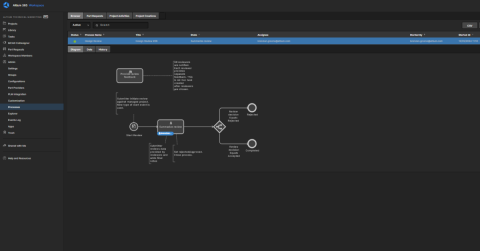Library Health
Summary:
The Altium 365 Workspace can be used to create and collaborate on your component library, and you can use the component data you store here in Altium Designer or in other apps. Data within the workspace uses component types to categorize components. This video demonstrates how to select a part choice based on a manufacturer and part number. It also shows users how to check the manufacturer price, stock, and part life cycle.
The video also introduces the concept of the Library Health Dashboard to ensure a healthy component library. It demonstrates the process to eliminate multiple components, obsolete parts, replace components with low stock, or components with risky lifecycle states within a component library and how to monitor a library for project optimization.
Transcript:
00:00:00:00 - 00:00:36:07
The Altium 365 workspace can be used to create and collaborate on your component library, and you can use the component data you store here in Altium Designer or in other apps. The workspace uses component types to categorize components. Let's check out capacitors and select this one. A component always has a name, a description, unique revision ID. For the Pro users, it can have a user defined lifecycle, and there are some parameters that define the components.
00:00:36:08 - 00:01:02:06
One key thing that components in Altium 365 have is part choices, which means they have a manufacturer name and a manufacturer part number. And we use this to link in information from other parts sources like how much they are in stock, what the price is, or what the life cycle is of this component. And you can have multiple part choices for a component.
00:01:02:07 - 00:01:11:02
This hundred nano farad capacitor, for example, can be the Kemet or this Murata.
00:01:11:03 - 00:01:35:03
We can use this information to actively monitor library health of your component library. We can do this in the library health dashboard. In the Library Health dashboard, we can see how many components we have in total. How many are healthy, unhealthy, how many are recently added, requested, or unused with this nice bar and you can even check this for used components only.
00:01:35:04 - 00:01:58:14
You can see now it only displays problems for components that are actually used in projects. What are the things we can check? We can check for components that don't have a part choice. So one dash or component without a manufacturer. and a manufacturer part number, then we cannot do automated checks on it. That would be a problem.
00:01:59:01 - 00:02:27:05
Some components might have stock issues or that you cannot buy it anywhere or risky life cycle states that the component might be obsolete. We can also check stuff for component data that a component is not categorized. It has an invalid parameter. Missing parameters that are required to the template, or using an outdated template. We can also check for duplicate components with the same name, or even components with the similar manufacturer part number in the part choice.
00:02:27:05 - 00:02:47:00
You don't want the same component, multiple times in your library. That can cause confusion, and we can do checks on models if a component uses outdated models. But there's a newer revision of a footprint, or maybe it's using a model that's obsolete. Maybe there was a problem found in the footprint.
00:02:47:01 - 00:03:09:13
It's set to obsolete and is still a component using it. If you used to have if you have access to the Silicon Expert App, you can even do risky lifecycle status check and predict supply chain issues from Silicon Expert. Let's have a look at the risky lifecycle states. There's a component in here that has a risky lifecycle state.
00:03:09:13 - 00:03:37:07
So this diode one N 4004 general purpose data is here. We can check on semi and there is zero stock no price. And the manufacture lifecycle state is obsolete. We can check this component out in Altium Designer too. And we can jump that quickly by using the show in desktop app function. You can even do this for multiple components in one go.
00:03:37:07 - 00:03:49:03
If you select two components holding control, you can open both components in the desktop app.
00:03:49:04 - 00:04:17:14
You can see we jump to Altium Designer when I'm already signed into the same workspace. Then I can see that both components are highlighted here, and I can check the component issues in here too. So even in Altium Designer, the risky lifecycle states that are originated from the library are displayed over here. And when I place this component, it will also show in the property screen.
00:04:18:00 - 00:04:43:10
Risky lifecycle states, the other place where this would show up would of course be the Active BOM, where you can just see that the part choice is obsolete. So with this Library Health Dashboard, you can actively monitor your parts in your component library and make sure that all the parts that you use in your projects are up to date and don't have any problems with lifecycle of it.



